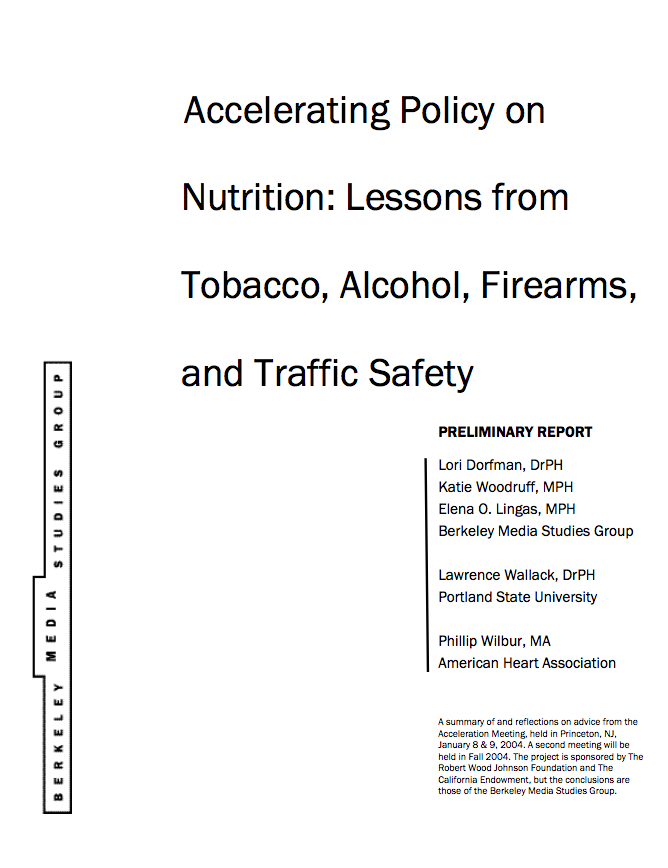Accelerating policy on nutrition: Lessons from tobacco, alcohol, firearms and traffic safety — preliminary report [pdf]
Friday, January 09, 2004This preliminary report captures advice from a meeting that uncovered practical experience from specific policy battles in tobacco, alcohol, firearms, and traffic safety to help public health funders and practitioners identify how to speed up progress on obesity. These lessons are integrated into the final report. The appendix outlines the components of an infrastructure to support policy advocacy to prevent and reduce obesity.













